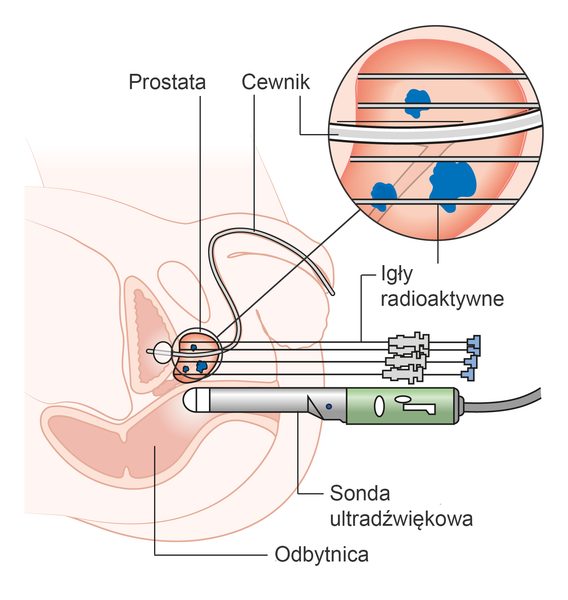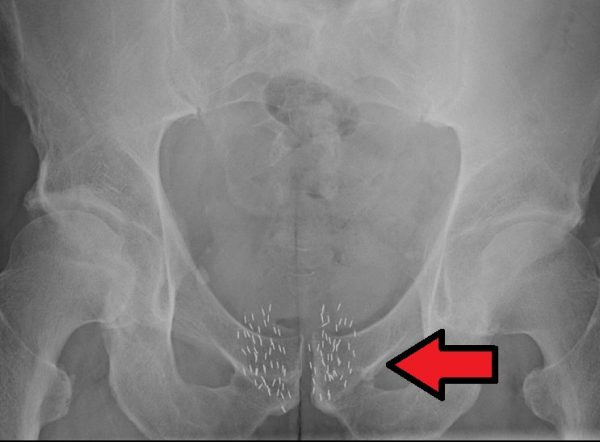Radiation therapy, also known as radiotherapy is an effective treatment offered to patients suffering from cancer. It is also used less commonly to treat blood disorders, thyroid problems, and non-cancerous growths. The treatment is recommended by the doctor to manage the malignant tumor at different stages. In the early stages of cancer, radiotherapy shrinks the tumor. So, it becomes easier to remove the malignant tumor using surgery. It is also used to kill the cancerous cells after undergoing the surgery. In advanced stages, the therapy is used as a part of palliative care. Therefore, it offers relief from the symptoms of cancer.
Learn More About Radiation Therapy
The therapy used high-intensity beams to kill cancer cells. The intense energy from the beam destroys the genetic material of the cancerous cells. In most of the cases, the therapy uses x-rays. But, as technology has progressed new and effective methods like protons are used to manage malignant cells. In normal cases, the term radiation therapy refers to external beam therapy. It is the most common type used to manage cancerous cells. The high-intensity beam attacks the cancerous cells in a specific area of your body. In some cases, the radioactive seeds are placed inside the body to manage the condition. The type of treatment is selected by the doctor based on your condition.

The therapy destroys the genetic material of the abnormal cells that grow and divide abnormally. Radiation therapy affects both cancerous and non-cancerous cells. But, the doctor tries to control the number of healthy cells affected by radiation. The goal is to minimize the side effects and manage cancer cells effectively. Your healthy cells affected by radiation can repair themselves after the therapy.
What Is The Need For Radiation Therapy?
A majority of people affected by cancer undergo radiation therapy as a part of their treatment plan. Doctors suggest therapy for treating almost all types of cancers. The therapy is also effective in treating non-cancerous tumors. Unlike other therapies (for example, chemotherapy), radiotherapy does not expose your whole body to cancer-fighting drugs. It is the localized treatment that only affects the specific area. The therapy aims to destroy the cancer cells without causing severe harm to the healthy cells nearby. It is an option chosen by the doctors at different times during the treatment for different reasons like:
The primary treatment option for managing cancer.
- Reduce the size (shrink) the size of the cancerous tumor (neoadjuvant therapy).
- To stop the growth of remaining cancer cells after the surgery (adjuvant therapy).
- Use in combination with other cancer therapies like chemotherapy to destroy the malignant cells.
- Alleviate the severe symptoms caused by advanced cancer to reduce the discomfort
Risks Associated With Radiation Therapy
Radiation therapy can trigger side effects. The adverse effects you suffer depends on the part of the body exposed to the therapy. The radiation dose you receive also influences the side effects a person suffers. Some people may not experience any adverse effects while others may suffer from several. Most of the risks associated with the problem are temporary. So, it disappears over time once you complete the treatment. The therapy attacks cancerous cells. But, it also affects the healthy cells surrounding the cancerous cells. When the radiation attacks healthy cells, you can experience specific side effects. It depends on the following factors:
- Your overall health
- The area receiving radiotherapy
- Radiation type
- The dose of radiation provided
Short Term Side Effects
You can experience severe issues immediately after you complete your radiation. The changes vary depending on the specific part of the body receiving radiation. But, the common side effects include:
- Fatigue
- Exhaustion
- Hair loss
- Diarrhea
- Nausea
- Skin changes
- Vomiting
People undergoing radiotherapy for cancer also suffer from mental issues. So, patients who undergo the therapy need screening for depression and anxiety. If you or your loved ones undergo the therapy, it is essential to get counseling services. It will help you cope up with the mental issues associated with the therapy.
Long Term Side Effects
The long-term side effects appear are irreversible. So, you may have to suffer from the issue for a long time. The side effects depend on the treatment site. It includes:
Radiation To Chest
The radiation to the chest region can cause heart or lung problems. It can also cause lymphedema. It is the condition developing due to fluid buildup in the lymph nodes. So, it causes the drainage channels in the arms and legs to become partially blocked. So, it results in swelling and pain.
Radiation To Head/Neck
The radiation to treat head and neck cancers can result in thyroid problems. It leads to hormonal fluctuation in your body.
Radiation To Pelvic Region
The radiation dose to the pelvic region can lead to hormonal changes. So, it results in early menopause. Radiation to a specific region can also cause infertility. Men and women can also experience sexual problems.
Secondary Cancer
Higher doses of radiation in certain areas can put you at risk of developing new cancers. You need to talk to your doctor regarding the risks and benefits of the therapy. It will help you understand the risk of developing another form of cancer.
The chance of developing long-lasting side effects depends on the person undergoing it. The overall health, the doses, and area of treatment influence the possibility of developing adverse effects.
Preparing For Radiation Therapy
A patient needs to prepare themselves before the therapy. So, the preparation for the therapy consists of the following steps:
Form A Medical Team
Before you undergo the therapy, your doctor forms a team with highly trained professionals. These medical professionals work together to provide you the best possible care. The therapy team consists of the following health care professionals.
Radiation Oncologist
The specialized doctor has experience in providing radiation to treat cancer. The radiation oncologist oversees your treatment. So, the doctor works closely with other members of the team to devise a proper treatment plan that meets your demands.
Radiation Oncology Nurse
The nurse has special training in caring for patients who undergo radiotherapy. You can seek the assistance of the nurse for the following:
- Get answers to the questions regarding your treatment
- Monitor your health constantly during the therapy
- Help you deal with the side effects associated with the therapy
Medical Radiation Physicist
The medical professional knows to use radiation equipment. They help devise your treatment plans.
Dosimetrist
The professional aids our radiation oncologist to calculate the correct dose of radiation necessary for your treatment.
Radiation Therapy Technologist/Radiation Therapist
The professional has the expertise to handle the treatment machine (in case of undergoing external beam therapy). They help you with the scheduled treatments.
Other Healthcare Professionals
Apart from the above-mentioned professionals, you need other additional members of your team. It is to take care of your physical, emotional, and social needs while you undergo treatment. So, the team includes:
- Dentists
- Physical therapist
- Nutritionists/dietitians
Planning Process
Before you undergo any types of radiation therapy, your special team of healthcare professionals guides you through the planning process. The planning process ensures you receive the right amount of radiation needed for the treatment to become successful. It can include the following:
Radiation Simulation
It is typically needed when the patient undergoes external beam therapy. The team helps find a comfortable position for you while you get the treatment. You must lie still during the treatment. Therefore, finding a position that offers you comfort is necessary. To find the right position, you need to lie on the table used for the therapy. The team uses cushions and restraints to position you in the right way and to make you lie still. Then, your therapy team marks the area in your body to receive the radiation. Depending on your situation, you get marked on the skin using a temporary marker or receive permanent small tattoos.
Plan Scans
It is essential for planning both internal as well as external radiotherapy. You have to undergo CT (Computerized Tomography) scans to determine the specific area in your body that requires treatment.
Based on the conclusion attained during the planning process, your team finalizes the type of radiations and the correct dose needed to treat cancer you suffer. The decision is based on the type and stage of cancer you suffer. The doctors also check your general health as well as the goal for the treatment before making a decision.
Radiation Therapy Procedure
The procedure varies with the type of therapy you choose and also depends on the nature of cancer. So, the therapy has the following procedure:
External Beam Radiation Therapy

The external beam therapy is also known as teletherapy. It is the most common treatment option used for managing or destroying cancer in the following regions:
- Head and neck region
- Colon
- Breast
- Prostrate
- Lung
It is the most common type of therapy for cancer. It is delivered from a distant source. The doctor uses a linear accelerator to deliver radiation. It is the machine that directs radiation (high-intensity beams) into the cancerous tumor. For the procedure, you need to lie on a table while the machine moves around you. As the machine moves, it delivers radiation from different angles. The linear accelerator is adjusted by the doctor depending on our specific situation. So, it directs the necessary radiation dose suggested by your doctor.
During The Procedure
During the actual treatment session, you need to lie down in a position suggested by the doctor. It is determined during the radiation simulation session. You are positioned with the assistance of molds to hold you in place. The linear accelerator machine rotates around the patient’s body to reach the actual target from several directions. You can hear the buzzing sounds made by the machine. But, do not panic. Just lie down and breathe normally till the session completely. It will complete within a few minutes. In some cases, people suffering from breast or lung cancer need to hold their breath until the radiation delivery. So, follow the instructions suggested by the doctor religiously.
The therapy team stays in a nearby room to monitor the session. The video and audio connection allow them to talk to each other. You can communicate with the team if you start to feel uncomfortable. But, in the majority of the cases, you will not feel any pain during the process. You can talk to your team about the concerns or any other problem arising during the procedure.
Treatment Duration
You receive external beam therapy for five days a week. It is important to continue the treatment for a duration suggested by your oncologists. You receive the treatment on an outpatient basis. In most of the cases, your oncologist schedules the treatment over several weeks. It allows the healthy cells affected by radiation to recover between the sessions. Each treatment session lasts for ten to thirty minutes. For advanced cases of cancer, a single dose of radiation helps relieve the pain and associated signs. So, such treatments are used for managing the discomfort alone.
Internal Radiation Therapy

The therapy also known as brachytherapy involves using the radiation sources close to the area of the body containing the tumor. In some cases, the doctors insert the radiation directly into the tumor. The treatment is also known as seed implantation. It delivers high doses of radiation directly into the cancerous site. But, it spares the healthy tissue surrounding the malignant cells. With brachytherapy, your oncologist inserts or implant radioactive materials at the specific site of your cancer. Depending on the type of cancer, the placement may remain in your body temporarily or permanently. The radioactive materials are called seeds. These seeds release the radiation into the tumor over a period (a few months). The radiation seeds decay within a year. It remains on the specific site safe for the rest of your life.
During The Procedure

To start the procedure, your doctor uses a stretchy tube called a catheter. It aids the doctor place the radioactive seeds into the tumor. In some cases, brachytherapy is placed into the tumor using a larger device known as an applicator. How the doctor places the radioactive seeds depends on the type of cancer you suffer. Before beginning the treatment, the doctor places the applicator into the body. After placing the catheter or applicator in the specific site, your doctor places the radiation source inside it. Depending on cancer, your doctor places the radiation source for minutes, days or lifelong. The type of radiation source, cancer you suffer, the specific site affected by cancer, etc. aids in deciding the duration of placing the radiation.
Treatment Duration
Depending on the type of brachytherapy, the treatment duration varies. For a low-dose rate therapy, the radiation seeds stay in the cancer site for one to seven days. You need to stay in the hospital for the duration. Before leaving the hospital, your doctor removes the catheter or applicator. For High dose brachytherapy, the session lasts for ten to twenty minutes. Your doctor repeats the session a couple of times in a day for two to five days. In some cases, you need to undergo the session once a week for at least two to five weeks. Only after the sessions, the doctor removes the applicator or catheter. The permanent implants are placed on the cancer sites and left for the rest of your life. The catheter is removed after placing the seeds.
Cost Of Radiation Therapy Treatment
Depending on the type of cancer you suffer and the radiotherapy option you choose, the costs vary. The median cost for a course of the treatment costs around $8000 to $30,000. The costs can change based on the number of sessions you need. In countries promoting medical tourism offers the treatment at reduced costs. You get the best treatments from the best oncologist in a multispecialty hospital by spending INR10, 00,000 to INR 20, 00,000. The treatment consists of six cycles of radiotherapy treatment.
Results Of Radiation Therapy
Depending on the severity of cancer you suffer, you have to undergo treatment for five days a week for three to nine weeks. You get the weekend days off to reduce the side effects. It helps your normal cells to recuperate. After the treatment, you need to undergo scans. It helps your doctor to monitor the progress. If you are getting treatment for a tumor, then the imaging tests can show how cancer has responded to the therapy. Some people can see results with just a single session. But, others can find a difference only after several weeks or months. In some cases, radiotherapy offers no results. So, your doctor changes the treatment plan to get results.
Recovery After Radiation Therapy
After the therapy, you can go home. You can continue with your routine. But, the treatment can cause severe side effects. So, you can experience the following:
- Extreme tiredness
- Emotional distress
- Sensitivity around the treatment area
You need to take different steps to manage the side effects associated with the therapy. So, it is important that you need to take the following steps:
- It is important to get plenty of rest to overcome fatigue and exhaustion.
- Include a healthy diet with more fruits, vegetables, whole grains, etc. to ensure you get the necessary vitamins and minerals for a speedy recovery.
- To overcome emotional distress, you need to talk to your friends and family members. Get medical assistance or emotional support from a professional.
- You need to follow the instruction provided by the doctor. It mainly involves skincare. Always keep the skin safe from irritation or other problems.
- Avoid going outside the sun. The exposure to sunlight can increase your risk of photosensitivity.
- Monitor your body for different side effects occurring due to the radiotherapy. If you feel distressed, then see your doctor immediately. Your doctor recommends additional treatments to relieve the side effects.
- In severe cases, you cannot function properly. So, you need to adjust your work schedules or take medical leave until you recover.
Conclusion
Radiation therapy is well tolerated by most of the patients. It is the most integral part of cancer treatment. So, after the therapy people can resume their normal routine. If you develop several side effects, talk to your doctor to overcome the discomfort. By undergoing the therapy, you can improve your quality of life. If you have concerns or queries, then never feel shy to talk to your doctor.
View Article Sources
